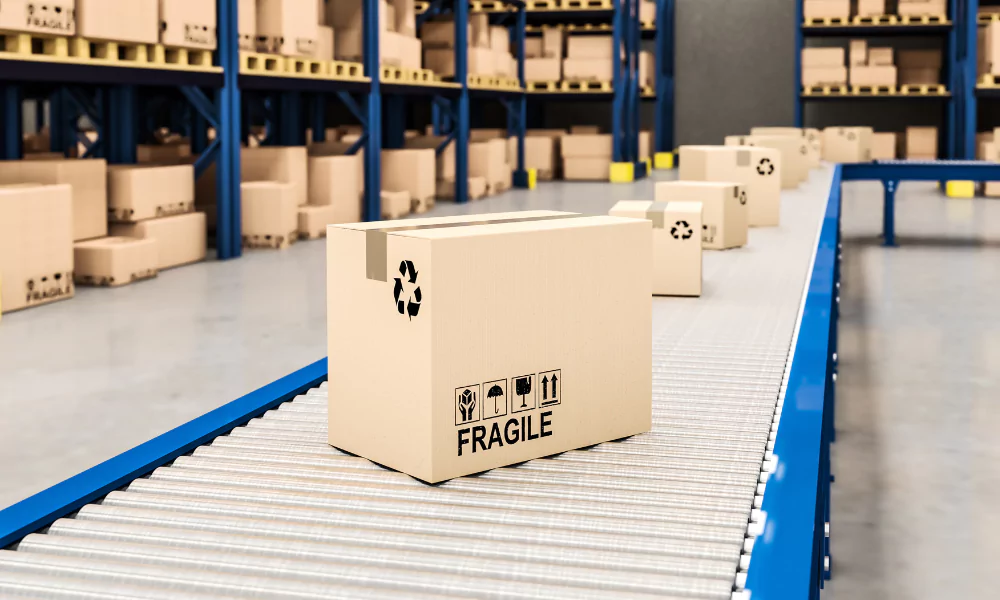
As science and technology zoom ahead, the logistics world finds itself in a whirlwind of new challenges and opportunities.
Among the gears that keep this system running smoothly, the conveyor system plays a crucial role. Their performance can make or break the efficiency of the entire logistics setup.
Thanks to the ongoing advancements in the Internet of Things, artificial intelligence, big data, and more, the conveyor domain is evolving rapidly, offering exciting prospects for the logistics sector.
This blog aims to delve into the new conveyor technology and trends, seeking ways to make logistics operations even more efficient and intelligent.
The Conveyor System: Latest Trends
The logistics world is always changing, with new trends popping up all the time to make things better and faster. This brings a bunch of perks like making things run smoother, saving money, and keeping everything safer.
These trends include:
1. Smart Conveyors
A major shift in conveyor system design and technology involves incorporating intelligent capabilities like sensors, cameras, RFID tags, and software.
These enhancements empower conveyor systems to oversee and adapt to the following:
- Speed
- Direction
- Load
- Status
- Communication with other machinery and operators.
Additionally, smart conveyors can enhance energy efficiency, minimize downtime, and enhance safety and quality control measures.
2. Modular Conveyors
One more trend in conveyor system design and technology involves the adoption of modular components like belts, rollers, chains, and frames.
These modular conveyors:
- Offer increased flexibility and customization since they can be swiftly put together, taken apart, and rearranged to fit various applications, layouts, and needs.
- Moreover, modular conveyors have the potential to lower maintenance expenses since they can be swiftly replaced or repaired.
3. Green conveyors
With growing environmental consciousness and stricter regulations, conveyor systems are evolving to lessen their ecological footprint.
To become more environmentally friendly, conveyor systems are utilizing the following:
- Renewable or recycled materials like wood, plastic, or rubber
- Energy-efficient motors, drives, and controls.
4. Customized Conveyors
Another emerging trend in conveyor system design and technology is the request for personalized solutions, designed to address the unique needs of different industries, applications, and obstacles.
Customized conveyors can provide benefits such as
- Enhanced performance
- Dependability
- Effectiveness, while also meeting specific criteria like hygiene, cleanliness, or safety.
- These customized conveyors can also integrate inventive features such as curved, spiral, or vertical sections; sorting, diverting, or merging capabilities; or specialized coatings or finishes.
Now let’s get into the various conveyor belt technology and innovations.
The Conveyor System: Latest Technologies And Innovations
New technologies in the field of conveyors are listed below:
1. Internet of Things (IoT)
The use of Internet of Things (IoT) technology has completely changed how conveyor systems work.
By adding different sensors and devices onto the conveyor, it can now keep an eye on its operation in real time and gather data about how it’s running.
This data is then sent to the cloud and analyzed using big data technology. The analysis helps in designing the conveyor system better and also gives early warnings if something might go wrong.
2. Artificial Intelligence (AI) technology
Artificial intelligence is becoming more prevalent in conveyor systems.
Using machine learning and deep learning algorithms, the conveyor’s operational data is studied and analyzed to make intelligent predictions and optimize its performance.
Moreover, AI can be employed for diagnosing faults and providing early warnings for the conveyor, enhancing the equipment’s reliability and stability.
3. Robot Technology
As robots continue to advance, they are increasingly integrated into conveyor systems.
These robots are capable of carrying out diverse tasks such as material handling, assembly, and testing. Their inclusion significantly enhances the level of automation and productivity within conveyor systems.
Innovative Application: Smart Conveyor System
Drawing from the advancements in the above-mentioned new technologies, there are numerous innovative conveyor technology in the industry.
One standout example is the smart conveyor system. This system integrates Internet of Things, artificial intelligence, and robotics technology to achieve automated monitoring, scheduling, and control of the entire conveyor process.
It not only provides real-time monitoring of the conveyor’s operation but also conducts intelligent scheduling and control based on actual demands, ensuring the conveyor operates at its optimal state.
Furthermore, the smart conveyor system can analyze collected data comprehensively to offer robust support for enterprise decision-making.
FAQs: Modernizing Conveyor Systems: Robotics, AI, and Sustainable Innovation
What are the uses of conveyors?
A conveyor system, a common equipment in various industries, serves as a standard mechanical handling device to transfer goods, products, raw materials, and other items from one place to another, typically within the same vicinity or facility.
How durable are conveyor systems?
The lifespan of conveyor belts can greatly vary depending on the specific application, ranging from just a few weeks to potentially over 10 years. Factors such as the conveyed product and the operating conditions play a significant role in determining belt longevity.
What advantages does AI offer in logistics?
The utilization of AI in e-commerce logistics yields several benefits, such as decreased downtime, faster delivery times, heightened driver safety, enhanced precision in inventory management, quicker order fulfillment, more accurate sales forecasts, and improved supply chain planning.
Conclusion
As new technologies keep evolving and societal needs shift, we can anticipate more innovations and advancements in the conveyor industry.
Enhanced automation and intelligence, environmental sustainability, customization, and modular design will be key trends driving future developments in conveyors.
We believe that these advancements will deliver more efficient and intelligent solutions to the logistics sector, fostering continuous growth and progress within the industry.


